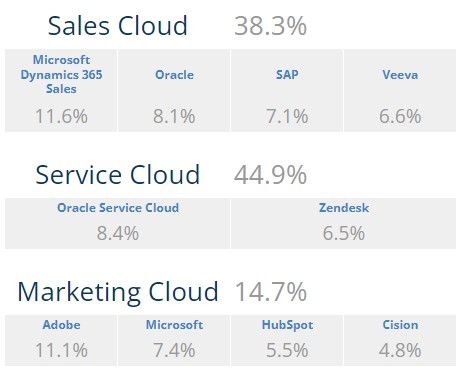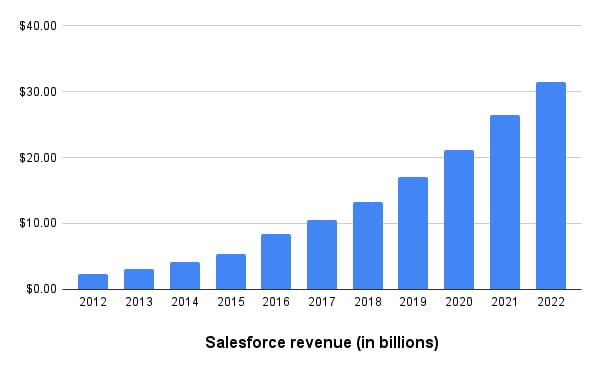Is Salesforce CRM the solution your company is looking for?
Salesforce CRM is a strong cloud-based platform that helps businesses in different industries with various tools. Salesforce is a famous CRM software...
Tonic3 develops and executes strategies that drive profit through Digital Transformation. Practically that means we are built to help clients hone the right strategy, implement the right technology, and build the right long-term capabilities to deliver lasting transformation.
Industries
We believe that effective technology helps people succeed in their daily lives. So we help our clients engineer useful technology for their clients, partners, and employees. That translates to every major industry, but over the years we’ve developed several core areas of expertise.
3 min read
 Sergio Gaffoglio
:
Oct 27, 2023 6:40:46 PM
Sergio Gaffoglio
:
Oct 27, 2023 6:40:46 PM

Salesforce is highly customizable, integrates with other applications, and offers modules for sales, marketing, customer service, and more. Additionally, it enables the development of custom applications and is part of a broad business ecosystem.
It is a powerful tool that significantly enhances key performance metrics, such as ROI (Return on Investment), productivity, user satisfaction, lead conversion, and customer retention, among others.
Customer Retention is the effort to engage and maintain customer interest, build loyalty, and reduce attrition. The significance of customer retention cannot be overstated. It offers cost-effectiveness, with the cost of retaining existing customers being 5 to 25 times less than acquiring new ones. Additionally, it cultivates brand loyalty and leads to a significant increase in spending, with customers spending 67% more by their third year of engagement.
Salesforce CRM enhances customer retention through data analysis, streamlined processes, and personalized communication strategies:
Salesforce is used by a wide range of businesses in various industries and sizes. Some well-known companies that rely on Salesforce include Santander, Coca-Cola, and Accenture.
General Electric (GE) uses Salesforce for sales and service operations, while Toyota enhances customer relationships with it. Unilever boosts marketing and sales strategies, and American Express improves customer relationship management.
Other companies are L'Oréal, T-Mobile and The Home Depot, which leverages it to enhance their customer experiences.
In the competitive landscape of CRM’s, Salesforce emerged as a dominant force in 2022.

These competitors collectively faced a significant challenge as Salesforce outperformed their combined efforts in securing CRM market share during the last year.
Market share by Salesforce cloud products
When it comes to Salesforce's individual cloud products, the results are equally impressive.
Salesforce serves clients in a wide variety of industries. Some industries from which their clients predominantly come include:


Salesforce's yearly revenue amounted to $31.4 billion, marking an impressive growth of nearly 18.4% from the previous year's $26.5 billion, although it fell slightly short of initial projections.

Salesforce offers a variety of products, but some of the most prominent and widely used ones include:
The Salesforce ecosystem is poised for remarkable growth, with a projected surge in job opportunities and business revenue. Salesforce's developers, in particular, play a pivotal role in this thriving landscape. Here's a glimpse of the key insights regarding the demand, hierarchy, and distribution of Salesforce developer roles.
Working with a Salesforce expert, like Tonic3, ensures a tailored system that aligns with your unique business needs. To explore the full potential of Salesforce, reach out to us today. Discover how Salesforce can elevate your customer relationship management.
Check out our Quick Starts for a swift Salesforce launch.

Salesforce CRM is a strong cloud-based platform that helps businesses in different industries with various tools. Salesforce is a famous CRM software...

In the ever-evolving world of marketing, technology has transcended its role as a mere tool to become the catalyst for transformation. Within this...

The email as a means of communication has not only retained its relevance but, on the contrary, remains more pertinent than ever. The success of an...